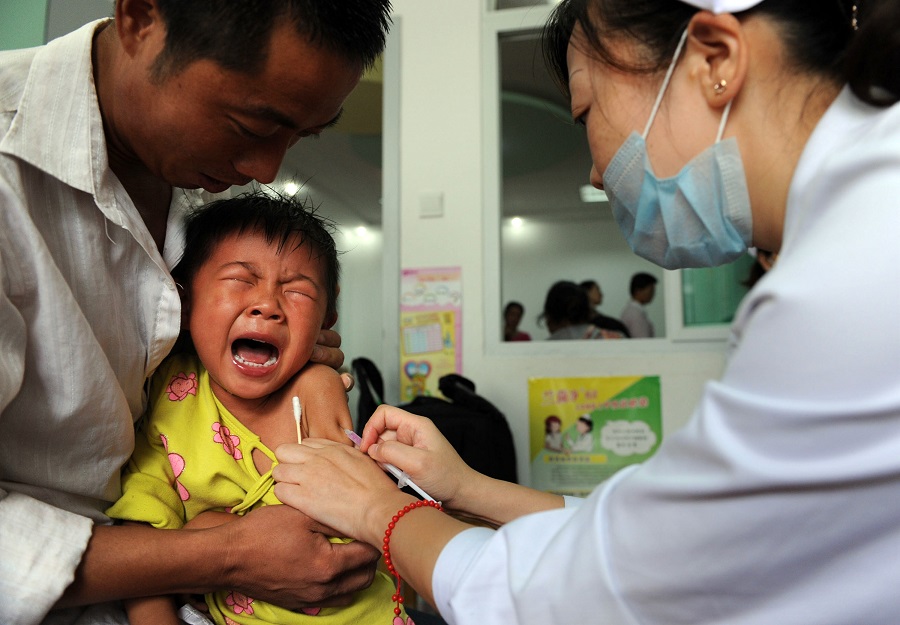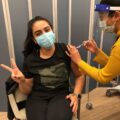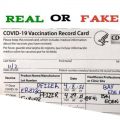Vaccination is a medical procedure that involves administering a vaccine to an individual in order to provide protection against specific infectious diseases. Vaccines contain weakened or inactivated versions of the disease-causing pathogens or their components, such as proteins or toxins. When a person receives a vaccine, their immune system is stimulated to recognize and mount a defense against these pathogens without causing the actual disease.
The primary goal of vaccination is to prevent or reduce the severity of infectious diseases and their complications. Vaccines have been instrumental in controlling and eradicating numerous diseases throughout history, such as smallpox, polio, measles, and more recently, diseases like COVID-19.
Vaccination works by stimulating the immune system to produce an immune response, including the production of antibodies and the activation of immune cells. These immune responses help the body recognize and eliminate the specific pathogen if the individual is later exposed to it. By immunizing a large portion of the population, vaccines can achieve herd immunity, which provides indirect protection to those who cannot receive the vaccine due to various reasons, such as being too young, having certain medical conditions, or compromised immune systems.
Vaccines undergo rigorous testing and evaluation before they are approved for public use. They are subject to extensive clinical trials to assess their safety and effectiveness. Regulatory bodies, such as the Food and Drug Administration (FDA) in the United States or the European Medicines Agency (EMA) in Europe, review the data and grant approval for vaccines based on their demonstrated safety and efficacy.
It’s important to stay informed about vaccinations, including their benefits, potential side effects, and recommended schedules. Vaccination programs are typically implemented by governments and healthcare organizations to protect public health and reduce the spread of infectious diseases.
Pain and Vaccination
Vaccinations can vary in terms of the level of discomfort or pain experienced during the process. Here are two common types of vaccinations:
- Painless Vaccination: Many vaccinations are designed to be as painless as possible. These include vaccines that are administered through a needle injection but have a small gauge needle that minimizes discomfort. Healthcare providers often use techniques to make the process less painful, such as applying a topical anesthetic or using distraction techniques like talking or providing toys for children. Some vaccines can also be administered orally or through nasal sprays, which eliminate the need for needle injections altogether. Painless vaccinations include various methods that minimize discomfort during the administration of vaccines. For instance, needle-free injections use high-pressure air to deliver the vaccine through the skin without the use of a needle. Some vaccines can also be administered orally, such as the oral polio vaccine, where the individual swallows the vaccine as a liquid or as a sugar cube. Additionally, intranasal vaccines, like the influenza nasal spray, are sprayed into the nostrils, providing a painless alternative to injections. These painless vaccination methods help reduce anxiety and discomfort, especially for individuals who may be afraid of needles or have a low pain threshold.
- Painful Vaccination: Some vaccinations may be associated with a degree of pain or discomfort during administration. This can vary depending on factors such as the type of vaccine, the individual’s pain tolerance, and the technique used by the healthcare provider. Vaccines that require intramuscular injections, such as the influenza vaccine or certain childhood vaccines, may cause temporary soreness or mild pain at the injection site. The pain is typically short-lived and can be relieved with over-the-counter pain relievers or by applying a cold compress to the area.
It’s important to note that the perception of pain can vary from person to person. What may be experienced as pain by one individual could be considered mild discomfort by another. Healthcare providers are trained to administer vaccines in a way that minimizes discomfort and to provide appropriate pain management strategies if necessary. Some examples of vaccines that are commonly associated with discomfort during administration include the tetanus vaccine, hepatitis A and B vaccines, and certain childhood vaccines such as the DTaP (diphtheria, tetanus, pertussis) and MMR (measles, mumps, rubella) vaccines. These vaccines require an intramuscular injection, often in the upper arm or thigh, and may cause temporary soreness, mild pain, or a slight burning sensation at the injection site.
If you have concerns about pain associated with a specific vaccination, it’s always best to discuss them with your healthcare provider. They can address your concerns and provide guidance on pain management techniques or alternative options, if available.
Can We Switch From Painless To Painful Vaccination?
In general, it is not possible to switch from a painless vaccination method to a painful one for the same vaccine. The method of vaccine administration, whether it is painless or painful, is determined by the formulation of the vaccine and the approved administration guidelines.
Vaccines are developed and tested to ensure their safety and efficacy using specific administration methods. Changing the method of administration may affect the vaccine’s effectiveness or safety profile. Therefore, it is not recommended to alter the approved method of vaccine administration.
If you have concerns about the pain associated with a particular vaccine, it is best to discuss your concerns with your healthcare provider. They can provide guidance on pain management techniques, offer reassurance, or address any specific concerns you may have. Healthcare providers are experienced in administering vaccines and can help make the process as comfortable as possible for you.
Aftercare For Painless and Painful Vaccination
If you have received a vaccination that transitioned from a painless method to a painful one, it’s important to follow appropriate aftercare practices to minimize any discomfort and promote healing. Here are some general guidelines:
- Take over-the-counter pain relievers: If you experience pain or soreness at the injection site, you can take over-the-counter pain relievers like acetaminophen (e.g., Tylenol) or nonsteroidal anti-inflammatory drugs (NSAIDs) such as ibuprofen (e.g., Advil, Motrin) as directed by the package instructions. These medications can help alleviate pain and reduce inflammation.
- Apply a cold compress: To reduce swelling and relieve pain, you can apply a cold compress or ice pack to the injection site. Wrap the ice pack in a thin cloth or towel and apply it for 10-15 minutes at a time, several times a day, if needed.
- Keep the injection site clean and dry: It’s important to keep the injection site clean and dry to prevent infection. Avoid touching or scratching the area unnecessarily.
- Avoid excessive physical activity: Engaging in strenuous activities or exercises that put pressure on the injection site may increase discomfort or prolong healing. It’s advisable to take it easy for a day or two after the vaccination.
- Follow specific instructions from your healthcare provider: Your healthcare provider may provide you with specific aftercare instructions depending on the type of vaccination and the pain associated with it. It’s important to follow their guidance and reach out to them if you have any concerns or questions.
- Monitor for any adverse reactions: While some pain, soreness, or mild swelling is normal after a vaccination, it’s essential to monitor for any severe or persistent adverse reactions. If you experience severe pain, excessive swelling, redness, or signs of infection (such as pus or increasing warmth at the injection site), contact your healthcare provider promptly.
Remember, these guidelines are general and may vary depending on the specific vaccine and your individual circumstances. Always consult with your healthcare provider for personalized advice and follow their recommendations for aftercare following a vaccination.





